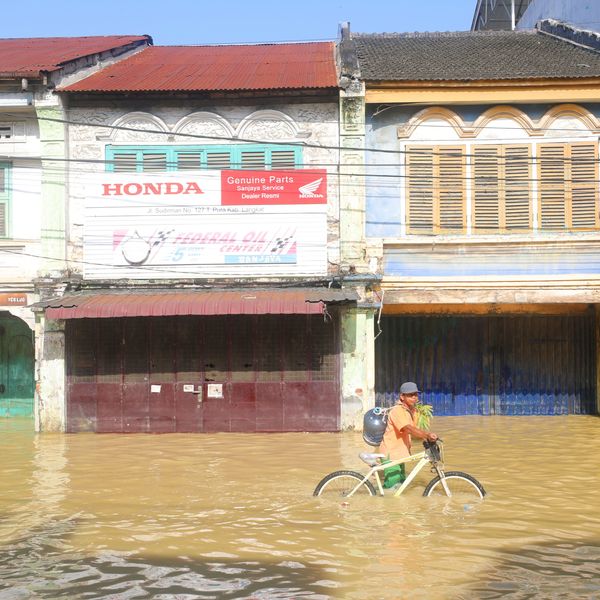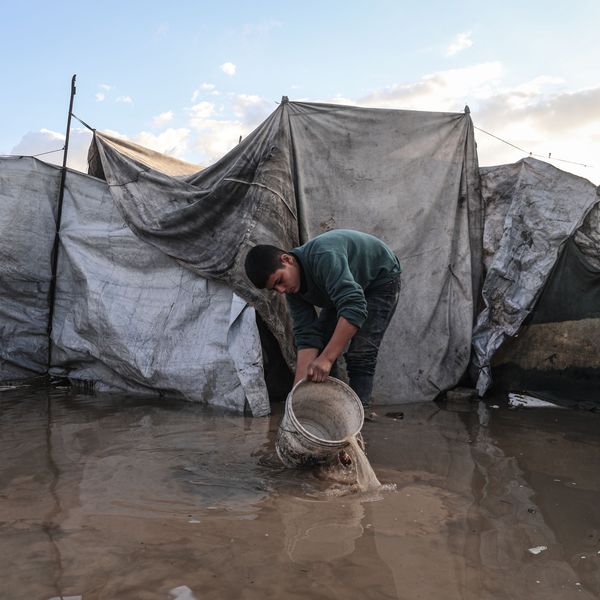As much of the North American media focuses on the ongoing unprecedented flooding and relief efforts in Texas and now potentially Louisiana, another tragedy is unfolding, which is going largely unreported, in Asia.
Whereas the death toll in Texas stands at 20, the estimated death toll in South Asia is estimated at 1,200 after weeks of unusually strong monsoon rains affecting India, Bangladesh and Nepal.
The Red Cross estimates that 14 million people have been affected by flooding in India; over 7 million in Bangladesh and 1.5 million in Nepal. The United Nations puts the total number of people affected by floods and lindslides at total nearly double that at 41 million.
"Although the monsoon is an annual event, this year's rains have been seen as far worse than usual, which people are blaming our changing climate for making things much worse."
According to the Red Cross: "Vast swaths of land across all three countries are under water .. Hundreds of thousands of people have lost their homes and their livelihoods. Many medical facilities, schools, markets and other essential services are submerged."
And as the rains continue, many people are worried that the death toll - and the number affected - will rise.
Although the monsoon is an annual event, this year's rains have been seen as far worse than usual, which people are blaming our changing climate for making things much worse.
In India, for example, half the huge state of Uttar Pradesh, which is home to 220 million people, is under water. But they are not alone. One rescue and relief officer recently told Reuters that at least 850 people had been killed in six flood-affected states in the past month.
In the eastern state of Bihar "People didn't have much time to get out," Hanna Butler at the International Federation of the Red Cross and Red Crescent (IFRCRC), who has been studying the damage in region, told the Financial Times. "More traditional homes have been wiped out and concrete homes have also been ripped from their foundations."
In the India's lagest city, Mumbai, which is home to some 20 million people, and which is largely built on reclaimed land, schools and colleges are shut, with the city's transport system said to be "in chaos". One news report says that city has been "paralyzed by incessant rains". In some parts of the city, water is said to be five feet high. Five people are believed to have died in the city in the last 24 hours.
In Bangladesh, at least 134 people have died, 700,000 homes impacted with more than 8 million affected, with a third of the country now subject to flooding. "This is the severest flooding in a number of years."
Matthew Marek, head of disaster response in Bangladesh for the IFRCRC recently flew over the country: "I could not find a single dry patch of land. Farmers are left with nothing, not even with clean drinking water."
His colleague, Corinne Ambler, a Red Cross spokeswoman in Bangladesh, who also flew over the affected area, said: "All I could see was water, the whole way. You have tiny little clumps of houses stuck in the middle of water."
Indeed Reaz Ahmed, the director-general of Bangladesh's Department of Disaster Management, told CNN "This is not normal ... Floods this year were bigger and more intense than the previous years."
Meanwhile, in Nepal, 150 people have been killed and some 90,000 homes destroyed. Francis Markus, a spokesman for the IFRCRC told the New York Times from Kathmandu. "We hope people won't overlook the desperate needs of the people here because of the disasters closer home."
That disaster is Superstorm Harvey. Many people have commented at how little press coverage the South Asia floods have received compared to Harvey. Indeed, as with Harvey, climate change is exacerbating the problem in Asia, with one commentator in the Pacific Standard noting: "Climate change appears to be intensifying the region's monsoon rains."
"Thankfully, we are now starting to see media coverage of the devastation in South Asia facilitated by the coverage of Houston", adds Jagat Patnaik, the Asia Regional Head at ActionAid International. "If there is one thing that unites us, it's climate change: so perhaps our attention and efforts should be equal."
If you want to donate to you can via the Red Cross appeal or via ActionAid.



